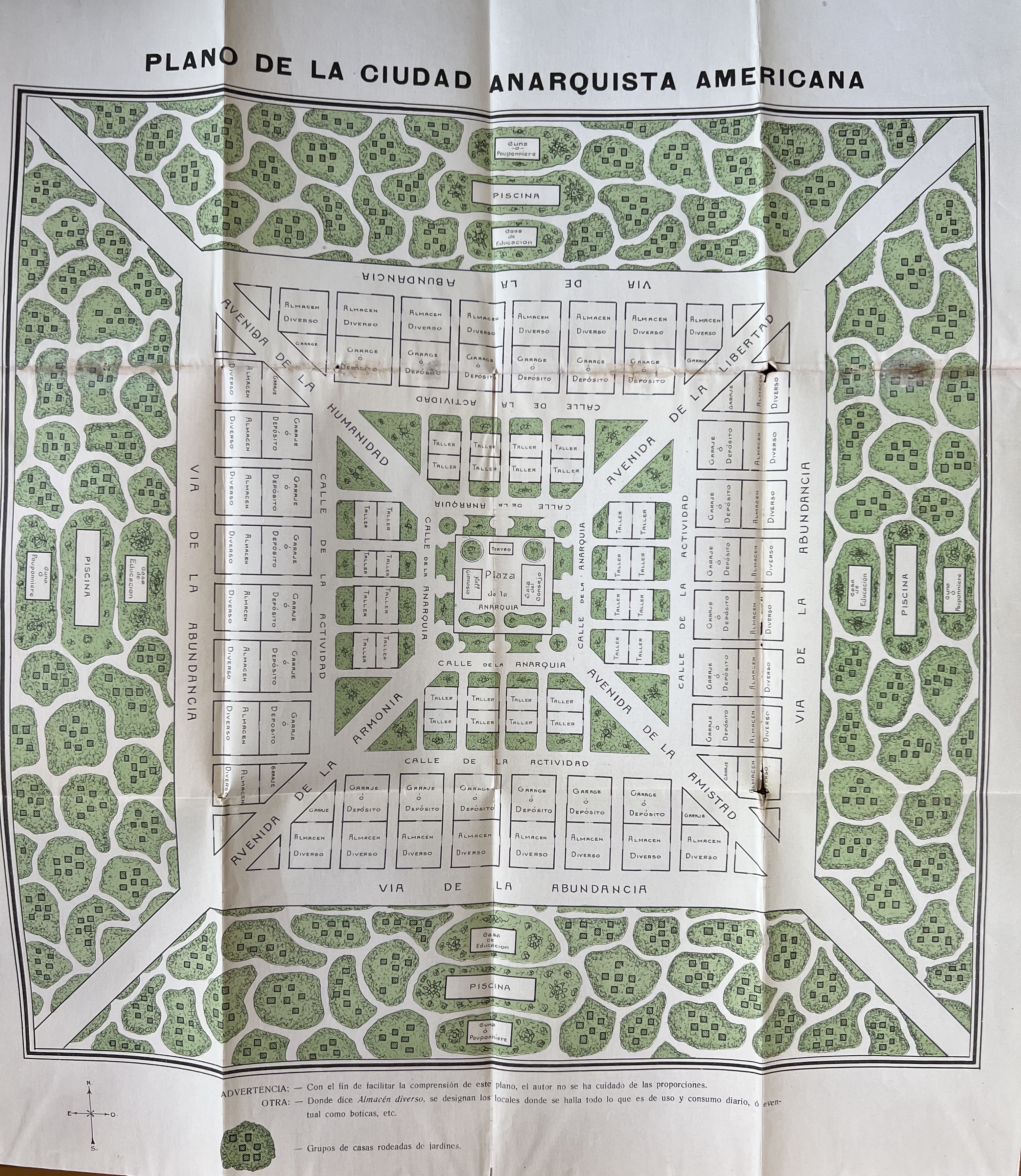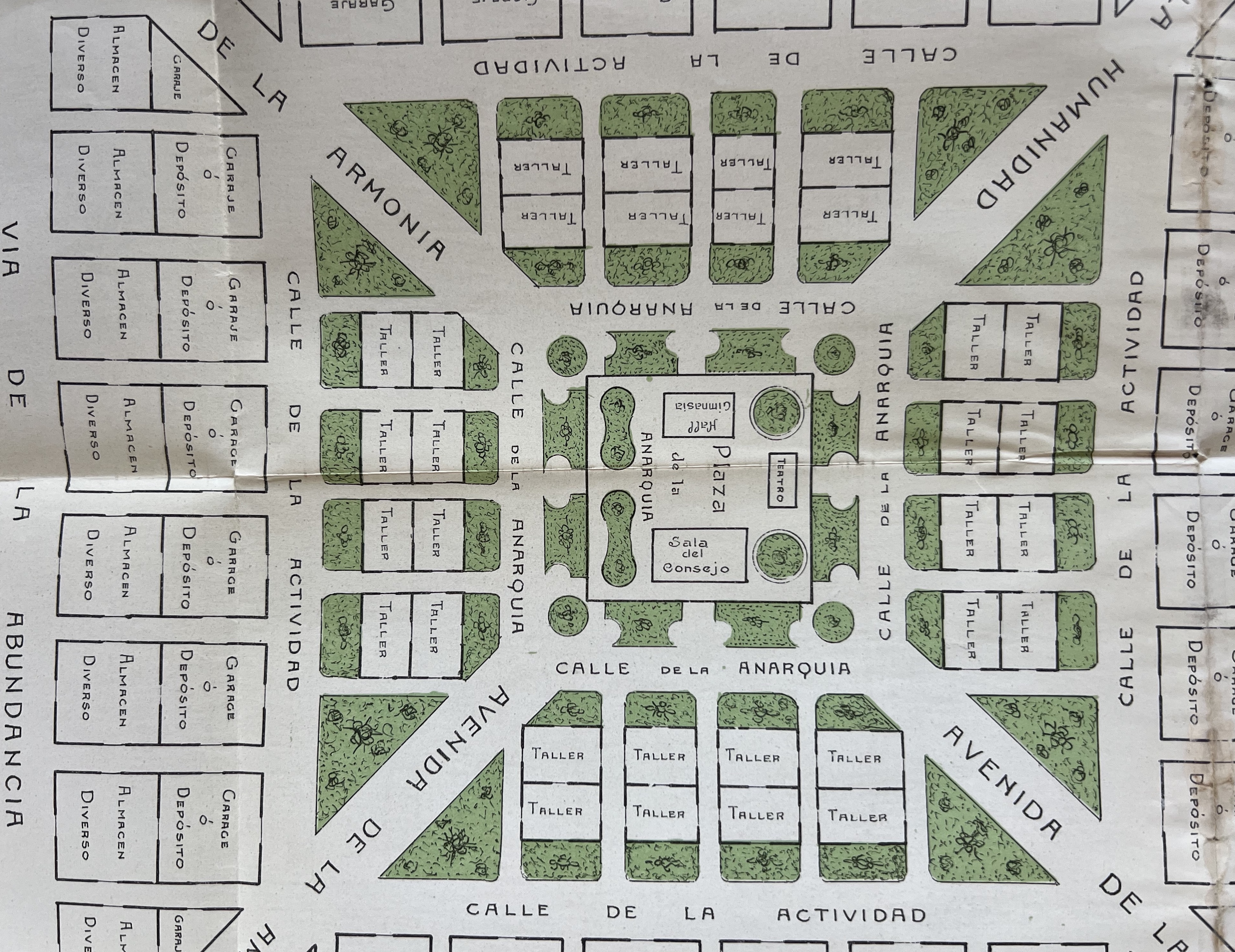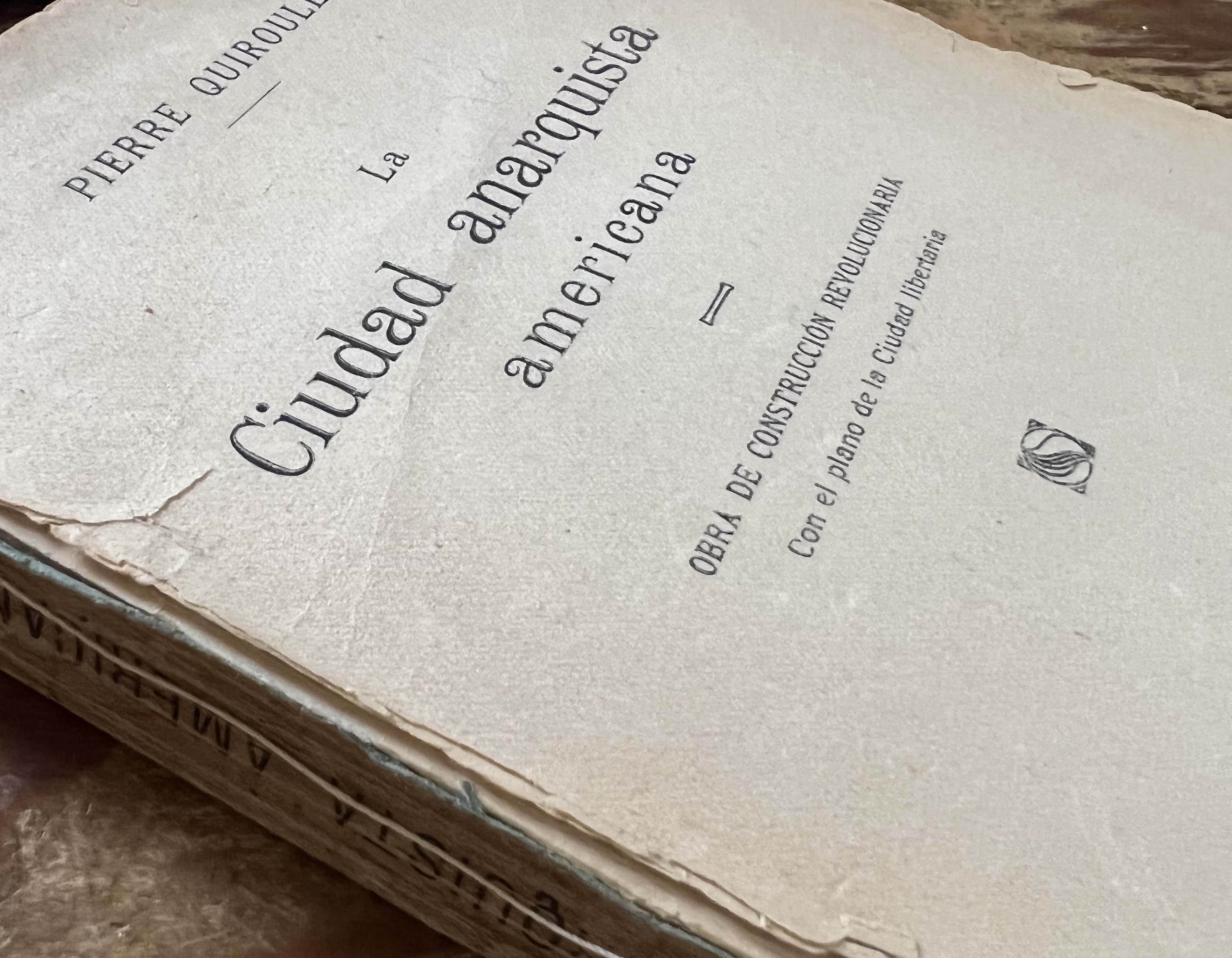GRAPH BOOKS: PRINTED MATTER FROM RADICAL ART AND SOCIAL MOVEMENTS.
FEMINIST HISTORIANS OF MATERIAL CULTURE.
La Ciudad Anarquista Americana
Pierre Quiroule [pseudo. Falconnet, Joaquín Alejo]., 1914

Quiroule, Pierre [pseudo. Falconnet, Joaquín Alejo]. La Ciudad Anarquista Americana: Obra de construcción revolucionaria con el plano de la ciudad libertaria. Buenos Aires: La Protesta, 1914. First edition. 18.5 cm, 283 pp.; the color folding map, 52 x 46 cm, present but loosened, a few small splits along creases; front wrapper lacking, spine and rear wrapper worn, losses at head; first signature stapled; small loss to forecorner of title page.
¡Queremos luz, queremos aire, queremos sol… y en vuestras ciudades y en vuestra organización social solo hay asfixia y tinieblas! [We want light, we want air, we want sun… and in your cities and in your social organization there is only suffocation and darkness!]
Extraordinary document of Latin American anarchist thought and urban planning, and a groundbreaking example in the history of utopian literature, almost unknown in English-language accounts.
Author Pierre Quiroule was a prolific anarchist writer in Argentina where a flourishing worker’s movement in the early 20th century produced numerous anarchist newspapers and periodicals that dominated the revolutionary press. Anarchism was a significant influence in Argentine intellectual circles and politics from 1890-1920, despite being marginalized in many scholarly accounts. (1) This is the context for Quiroule’s most important novel, “of crucial importance to understanding Argentine utopianism” (2) and how the utopian myth shaped national literature and identity. La Ciudad Anarquista distances itself from traditional (European) utopian fiction, which often takes place in ambiguous post-revolutionary eras and fantasy non-spaces, replacing them with definitively New World topographies and a story that highlights the painful transition from capitalist and monarchist society to an anarcho-communist future.
Anticipating some of the challenges of the Russian Revolution in 1917, Quiroule’s novel describes several rounds of political and social transformation, the first is a coup d’etat against the capitalist regime; the second is a revolution against the authoritarian communist state which replaces it. “The Anarchist City of America’s originality resides in the raising of these questions which had never before been addressed by utopian novels.” (3)
Quiroule identifies the metropolis as the corrupting organizational factor of the communist state, and proposes a new way of living in urban communities integrated with nature. For these descriptions he is clearly indebted to the literary examples of William Morris and Joseph Déjacque as well as the political theories of Piotr Kropotkin. Although he comes to some rather absurd conclusions about anarchist clothing and diet, he proposes a number of prophetic ideas about renewable energy (solar, wind, etc.) and the collectivization of land that relate to recent anarchist experiments.
Scarce: not reissued until 1976 and still unavailable in translation; no records of public sales; and only three OCLC holdings in North America: UFL, Washington U, and UNM.
SOLD
NOTES:
1. Santiago Juan-Navarro. “The Anarchist City of America: Libertarian Urban Utopias in the New World.” Atenea 29.1 (2009): 102.
2. op cit.
3. op cit., 105.

